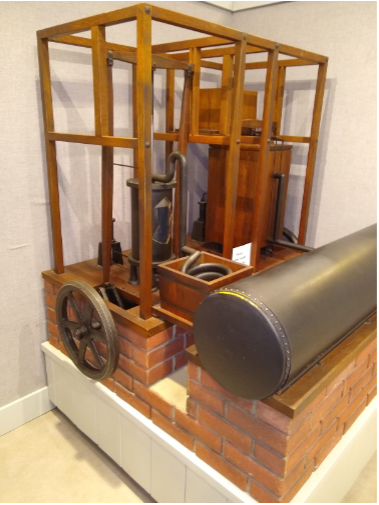While some people’s opinions differ about who invented and built the first ice machine, the patents obtained are documented and recorded as follows.
The idea for a refrigerator had come from Oliver Evans, also an American inventor who was one of the first Americans building steam engines in early 1800’s. He conceived it in 1805 but he never built it. Jacob Perkins , know as “The father of the refrigerator” was granted the first patent for the vapor-compression refrigeration cycle, on August 14, 1835 with title: “Apparatus and means for producing ice, and in cooling fluids.”

Dr John Gorrie who remembered as “the father of air conditioning” was a young physician working in two hospitals in Apalachicola, Florida. Dr Gorrie’s passion was researching treatments for tropical diseases like yellow fever. He believed that bad air was the cause for many of his patients diseases and ailments. His rudimentary method of treatment called for cooling the sickrooms by placing large blocks of ice in basins suspended from the ceiling. Since ice had to be transported from cold climates and large quantities were required, Gorrie began experimenting on making ice artificially. In 1845 he gave up his medical practice and focused on his inventions. In 1851 he was granted the first U.S. patent for “mechanical refrigeration”
Commercial refrigeration is believed to have been initiated by an American businessman, Alexander C. Twinning, in 1856. Shortly afterward, an Australian, James Harrison, examined the refrigerators used by Gorrie and Twinning and introduced vapor-compression refrigeration to the brewing and meat-packing industries. A somewhat more complex system was developed Ferdinand Carre’ of France in 1859. Unlike earlier vapor-compression machines, which used air as a coolant, Carré’s equipment contained rapidly expanding ammonia. (Ammonia liquefies at a much lower temperature than water and is thus able to absorb more heat.) Carré’s refrigerators were widely used, and vapour-compression refrigeration became, and still is, the most widely used method of cooling.

Recent Comments